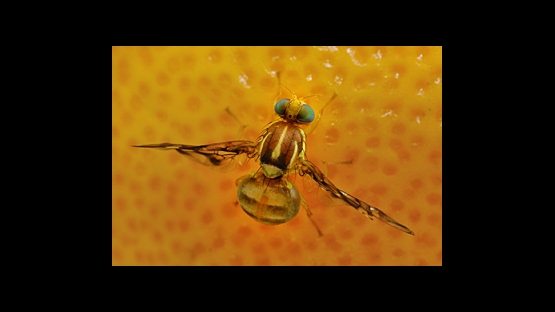The IAEA, in collaboration with the Food and Agriculture Organization (FAO), helped deploy sterile insect technology (SIT), a nuclear application, to assist in curbing Guatemala's fruit fly population, thereby providing a host of new jobs and at least doubling, over four years, export earnings from non-traditional agricultural export crops of tomatoes, bell peppers and papaya.
While prices slumped over the past decade for Guatemala's traditional exports of coffee, banana and sugar cane, sales of tomatoes quadrupled to $10 million in 2010 from $2.5 million in 2007, with export income from bell peppers roughly tripling to $3.2 million in 2010, and papaya doubling, also to $3.2 million. These increases vaulted Guatemala into first place as the largest Central American supplier to its nearest major international market, the USA, and created hundreds of rural jobs, typically for men in field pest control and for women in the packing and transportation services industries.
These successes are the result of programmes relying on IAEA technical and management expertise and aimed at eradicating the invasive Mediterranean fruit fly in the northern parts of the country bordering Mexico and suppressing the native pest fruit fly population. These flies do great damage to agricultural world trade, typically shutting countries out of an export market if they cannot prove produce to be pest free. Given a short shelf-life, fruits and vegetables tend to be the most valuable of agricultural export products.
Sterile Insect Technique (SIT)
"If you want to export, and also avoid the application of costly post-harvest treatments that can reduce produce quality, you have to get rid of both the Mediterranean and native fruit flies," says Jesus Reyes Flores, an entomologist of the FAO/IAEA Division of Nuclear Techniques in Food and Agriculture. "Sterile insect technology consists of rearing massive quantities of the same pest, sterilizing it by irradiation through a simple radiation device that otherwise causes no harm to the insect. The male insects are fed and later systematically freed in the fields, where they then mate with the pest insects present in the field, producing no progeny so that after the continuous release over several years the pest disappears."
Sterile insects are mass-reared, in this case in Guatemala, which has the largest sterile insect production facility in the world. Some 3 000 sterile males are needed per hectare to suppress these pests in heavily farmed areas, such as coffee plantations. As a comparison, for IAEA field work in Croatia, in locations where there are fewer fruit and vegetable types grown, only some 500 to 1 000 sterile flies are needed on average per hectare.
"The IAEA helps develop a complete system of control for major pests. This starts from the detection and monitoring of pests through to their control. Currently, we are also running projects that include an export sales component, in other words, in addition to help eliminating or supressing the pests and ensuring the produce is healthy and meets international standards, we also train producers to negotiate export sales with the appropriate markets," Reyes Flores says.
To be successful, the application of sterile insect technology requires some eight- to ten-years of work. The IAEA's assistance will draw to a close in 2012, at a point it believes the project will be self-sustaining.
IAEA Assistance
The IAEA has provided support through a succession of three Guatemala projects since 2001 against native fruit flies and also provided technical expertise to the trilateral Mediterranean Fruit Fly Programme, run by the governments of Guatemala, Mexico and the United States.
On 6 January 2011, the government of Guatemala declared some 220 000 ha, or 2 200 square kilometres, of its north-western border with Mexico fruit-fly free. Based on this achievement, the government started negotiations with commercial partners to certify the region as Mediterranean fruit-fly free. Simultaneously, the IAEA and FAO have supported the combat of native fruit flies, thereby facilitating from 2007 onwards the exports of tomatoes, bell peppers and papayas from parts of the country where these populations were suppressed.
"If you control the fruit fly in your produce you have the possibility to export it and obtain economic benefits that you would not obtain if you sold it in a local market," Reyes Flores said.


